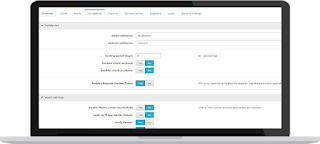- Get link
- X
- Other Apps
- Get link
- X
- Other Apps
A reliable and
efficient data source is required to gain the trust of the individuals.
Inaccurate data is a curse to the organization that once implemented may yield
poor decisions. This, in turn, may breach the long-standing trust of the
customers from the system or the firm that could never be regained. Thus, it is
imperative for the individuals to ensure that the data being provided is clean
and valid.
Data Validationand Cleansing is a critical aspect that is worth putting our efforts upfront.
Using data integration technologies, organizations can quickly remove data
inaccuracies, standardize on common values and cleanse dirty data to create consistent
and reliable information. Moreover, rules are made to incorporate the data
transformation process that fastens up the development and implementation of a
valid and cleansed data. This creates a unique workflow environment that
facilitates easier augmentation of existing data with new information to make
the data useful and up-to-date.
There are three
core steps that must be followed before validating the usefulness of data.
These are:
- Run the data through a set of validation rules and principles.
- Analyse the data and find exceptions, if any.
- Fix these exceptions for proper validation.
Although these three
steps are relatively simple and easy to follow for the data managers, in
reality, there is a minor step that is often missed i.e. which of these
exceptions must be prioritized or fixed first? Surely, not all exceptions are
the same. Some may have a much bigger impact on the firm’s underlying objective
that needs immediate attention. Hence, it is important to prioritize these
exceptions first, before we start fixing them.
In addition to
this, having credible information reduces the risk of costly errors and keeps
the data accurate and correct. Hence, Data Validation and Cleansing are two
methodical disciplines that must be used properly.

Comments
Post a Comment